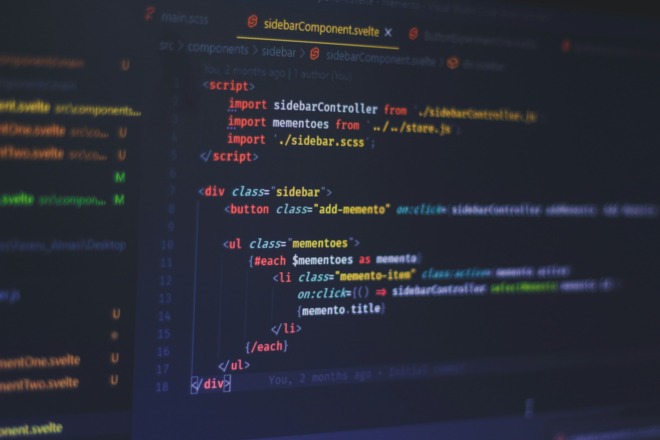You’ve likely heard the term internet of things (IoT) frequently in recent months. Knowing the words the acronym stands for is different from understanding how IoT works. There is an entire connectivity network between physical objects and sensors and cloud-based computing.
Statista estimates by 2030, there will be 25.44 billion devices connected to the IoT. Devices connect through different types of consumer markets and industry verticals. About 60% of the IoT is made up of consumer devices at this time.
Understanding how IoT works requires a basic understanding of technology, sensors and the cloud. Let’s look at different ways devices plug in and some examples to make it a bit clearer.
What Is the Internet of Things?
The internet of things isn’t just a catchy phrase. It refers to physical objects—the “things”—that have sensors, technology and software that helps them exchange information with other things via a connection to the internet.
Devices interact with the global information network without a desktop computer. While the majority of the market is made up of consumer goods, such as apps, smartwatches and household items, business also uses IoT.
A sensor sends data to a gateway, to the cloud and then to your mobile app. Of course, each device works a bit differently, but all involve a gateway, the internet and some type of delivery mechanism.
How IoT Works for Smart Cities
You’ve likely heard of smart cities and how they’re changing the way we live and do business. How IoT works in a metropolitan area may soon filter down more rural settings.
Studies show spending on digital cities is about $679.5 billion per year. Experts predict the areas of biggest growth will be in parking and energy saving measures. You might wonder how IoT works in an intelligent metropolis.
Examples of towns tapping into technology include 254 locations in Israel tied to their central system. Israel established a bureau to help reduce socio-economic gaps and make it easier for citizens to access government programs. They created an index connecting various areas of the country. Part of the system includes easy ways to register for school, pay fines and tap into government licenses.
Other ways how IoT works for towns include:
- Apps telling citizens where parking spots are open and allowing them to pay for space from their phones
- Sensors to let city engineers know when there’s an issue with the sewage system, transportation or other basic functions that make a place livable
- Easy access to the internet via 5G wireless connections
- Managing pollution data and making adjustments to reduce the risk
As more and more towns tap into the current smart city technology, expect more devices and options to appear. Imagine a world where people are tapped into the global network all day and night. With the advances in cell phones, the world is almost to a complete connectivity level now.
How Do IoT Devices Connect to the Internet?
How well IoT works depends on internet speeds. Rural areas may fall behind due to lack of service. Most rural communities have had to historically rely on satellite service, which can be slower than DSL and offer sporadic service.
The installation of fiber optic cables in many big cities means rural America falls even further behind. There are some promising changes on the horizon that might allow farmers and other businesses in smaller towns tap into the advantages of new technology.
Starlink is a satellite-based internet Space X is launching. The goal is to provide rural and remote parts with reliable and faster internet at an affordable price. While the cost is still a bit out of the range of some families, hopefully the rates will go down over time. The box to access the Starlink is around $500 and the service is about $100 per month. It is still in refinement, too.
5G also offers some promise for cell phone users to download apps and tap into a faster internet option. However, it is still only available in more populated areas at this time and may lag at times.
Who knows what technology might appear in coming years and reduce the challenges those in smaller communities face.
IoT Makes Human Work Simpler
Machine to machine interaction speeds up many repetitive tasks and allows humans to focus on creativity and face-to-face interactions. How IoT works is by collecting real-time data, processing it and helping humans become more efficient.
One example might be in a factory where a particular machine used to break down every other day, resulting in costly repairs and downtime. Installing sensors at the trouble spots and sending reports to a computer might allow leadership to see when the machine is nearing a breaking point. They can then send in the repair person to fix the issue before the machine breaks, saving time, money and downtime.
Another way IoT works is by analyzing complex data and sending regular updates to the user’s cell phone. A computer can spit out a report much faster than a human can calculate it.
How IoT works in the home is through a variety of apps and smart devices automating tasks. Examples include:
- Robot that is preprogrammed to vacuum the floor at set times
- Thermostat that adjusts to the temperature and saves time and money
- Smart fridge that compiles a shopping list based on items you pre-program into the system and knows when you run out of milk, eggs or other popular items.
- Door locks that work with your smartphone to let you in and out of your home.
Each year, new IoT devices hit the market. Things such as smart speakers are becoming more and more popular.
How IoT Is Changing Business
How IoT works with industrial companies is apparent. Utilizing sensors and tapping into automation saves time and money. However, technology is also changing smaller companies for the better.
Small businesses can tap into any number of devices to automate things such as sending a ping to a customer when they near a store or using a smart lock to give new employees access to the building.
Think about where you spend the most money and time and look for solutions that solve those issues and automate things. The more you tap into tech, the better you’ll function as an organization.
About The Author
Eleanor Hecks is the Editor-in-Chief of Designerly Magazine, an online publication dedicated to providing in-depth content from the design and marketing industries. When she's not designing or writing code, you can find her exploring the outdoors with her husband and dog in their RV, burning calories at a local Zumba class, or curled up with a good book with her cats Gem and Cali.
You can find more of Eleanor's work at www.eleanorhecks.com.


